“Exploring the Perfect Pooch: Top Medium Dog Breeds for Every Lifestyle”
** Introduction **
Choosing the right dog breed is a big decision, especially when you’re looking for a companion that is a perfect fit for your lifestyle. Medium breed dogs are a great choice for many pet owners. They strike a balance between small toy breeds and larger giants, and offer the best of both worlds. In this post, we’ll explore some of the best medium dog breeds that might be a good fit for you.
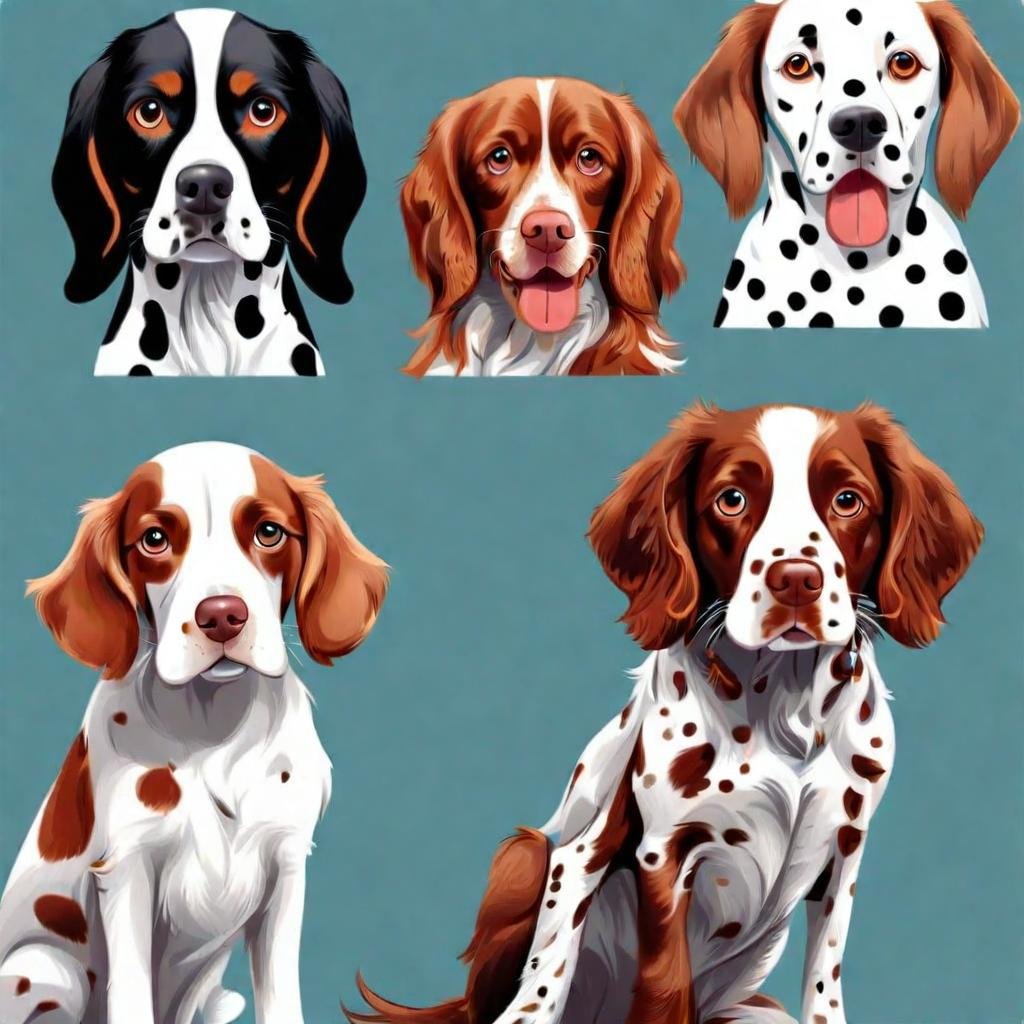
Table of Contents
Medium-sized dogs often have the versatility to adapt to different living situations, whether you live in a city apartment or a house with a backyard. They are known for their balanced nature, which makes them great for families, singles, and seniors. Whether you’re looking for a playful and energetic companion or a calm and loving friend, there is a medium breed dog for you.
We’ll go into detail about the characteristics, care requirements, and unique qualities of some of the top medium dog breeds. By the end of this article, you will have a clear idea of which breed might be a good fit for your home. So, let’s embark on this journey to find the best medium breed dogs that will bring happiness, companionship, and love into your life.
Top 15 Best Medium Dog Breeds ;
1. Labrador Retriever :
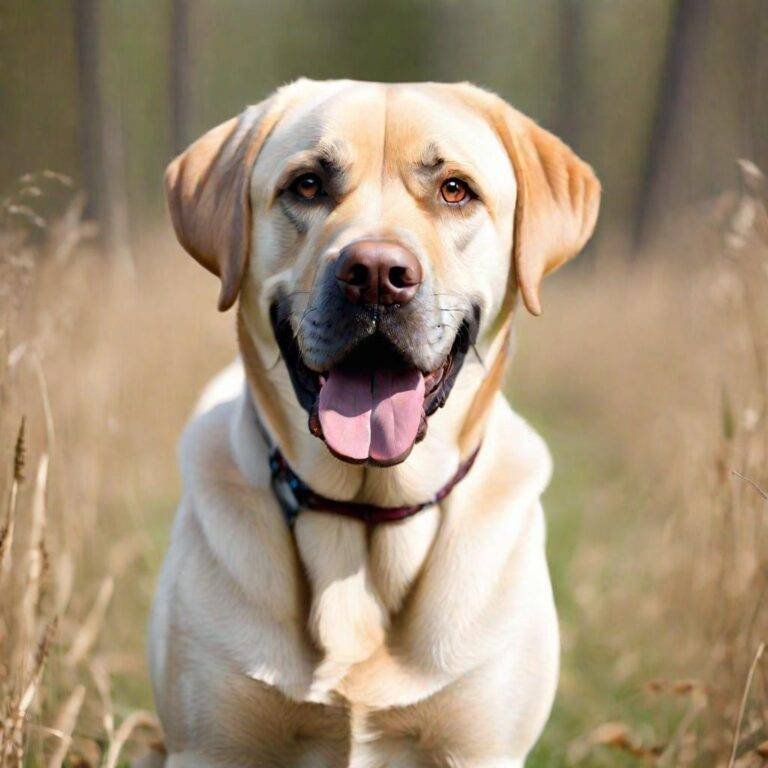
Height
- Male: 22.5 to 24.5 inches
- Female: 21.5 to 23.5 inches
Weight
- Male: 65 to 80 pounds
- Female: 55 to 70 pounds
Color
Labrador Retrievers come in three primary colors:
- Black
- Yellow
- Chocolate
Temperament and Behavior
Labrador Retrievers are known for their friendly, outgoing, and sociable nature. They are:
- Affectionate and loyal: Labs form strong bonds with their families and are known for their gentle nature.
- Energetic and playful: They have high energy levels and enjoy activities like fetching, swimming, and running.
- Intelligent and trainable: Labs are highly trainable and excel in obedience training and various dog sports.
- Good with children and other pets: Their gentle and patient demeanor makes them excellent family pets.
Lifespan
Labrador Retrievers typically have a lifespan of 10 to 12 years.
Unique History
The Labrador Retriever has an interesting and rich history:
- Origin: Despite its name, the breed originated in Newfoundland, not Labrador. In the early 1800s, fishermen used the Saint John dog, the predecessor to the modern Labrador, to retrieve fish and nets from icy waters.
- Development: This breed was further developed in England when these dogs were brought by British aristocrats. They were refined to increase their retrieval abilities and friendly nature.
- Recognition: The breed was officially recognized by the Kennel Club in England in 1903 and by the American Kennel Club in 1917.
- Role: Historically, Labrador Retrievers were used primarily for hunting and retrieving game due to their excellent swimming abilities and soft mouth. Today, they are also widely employed as service dogs, therapy dogs, and in search and rescue operations due to their intelligence, trainability, and strong work ethic.
Labrador Retrievers are one of the most popular dog breeds around the world, loved for their versatility, friendly nature, and exceptional companionship.
2. Border Collie :
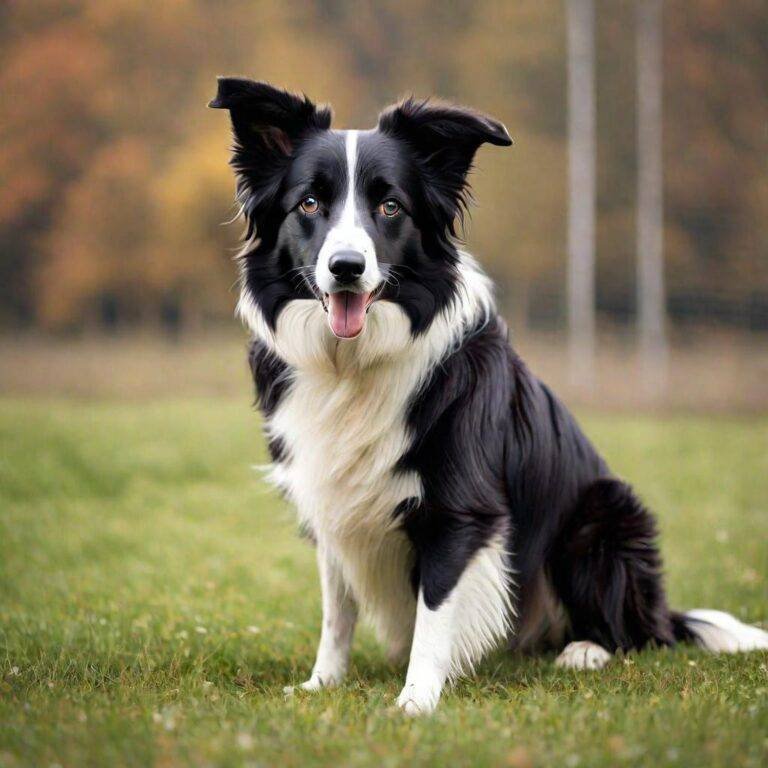
Height
- Male: 19 to 22 inches
- Female: 18 to 21 inches
Weight
- Male: 30 to 45 pounds
- Female: 27 to 42 pounds
Color
Border Collies come in a variety of colors and patterns, including:
- Black and white
- Red and white
- Blue merle
- Red merle
- Tricolor (black, white, and tan)
- Solid color (although less common)
Temperament and Behavior
Border Collies are renowned for their intelligence and work ethic. They are:
- Highly intelligent and trainable: Border Collies are considered one of the smartest dog breeds, excelling in obedience and agility training.
- Energetic and active: They require plenty of physical exercise and mental stimulation to stay happy and healthy.
- Focused and driven: Bred for herding, they have a strong instinct to control movement, which can manifest as herding behavior even in a domestic setting.
- Loyal and affectionate: They form strong bonds with their owners and are typically very loyal.
- Alert and responsive: Their keen senses make them excellent watchdogs, although they are generally not aggressive.
Lifespan
Border Collies typically have a lifespan of 12 to 15 years.
Unique History
The Border Collie has a storied history tied closely to its herding heritage:
- Origin: The breed originated in the Anglo-Scottish Border region, hence the name “Border” Collie. They were bred to herd sheep in the rough terrain of Scotland and northern England.
- Development: The modern Border Collie was developed in the 19th century, with a dog named “Old Hemp” considered the progenitor of the breed. Old Hemp was known for his exceptional herding abilities and calm demeanor, qualities that were highly sought after in later breeding.
- Recognition: While the breed has been recognized by various kennel clubs, including the American Kennel Club in 1995, there has been some controversy over the standardization of the breed, particularly with regard to the emphasis on physical appearance versus working ability.
- Role: Border Collies are still widely used as working dogs on farms and ranches, where their herding skills are invaluable. They are also prominent in dog sports such as agility, obedience, and flyball due to their intelligence and agility.
Border Collies are highly valued for their exceptional intelligence, work ethic, and versatility, making them a favorite among dog fanciers who can satisfy their high energy and mental stimulation needs.
3. Bulldog :
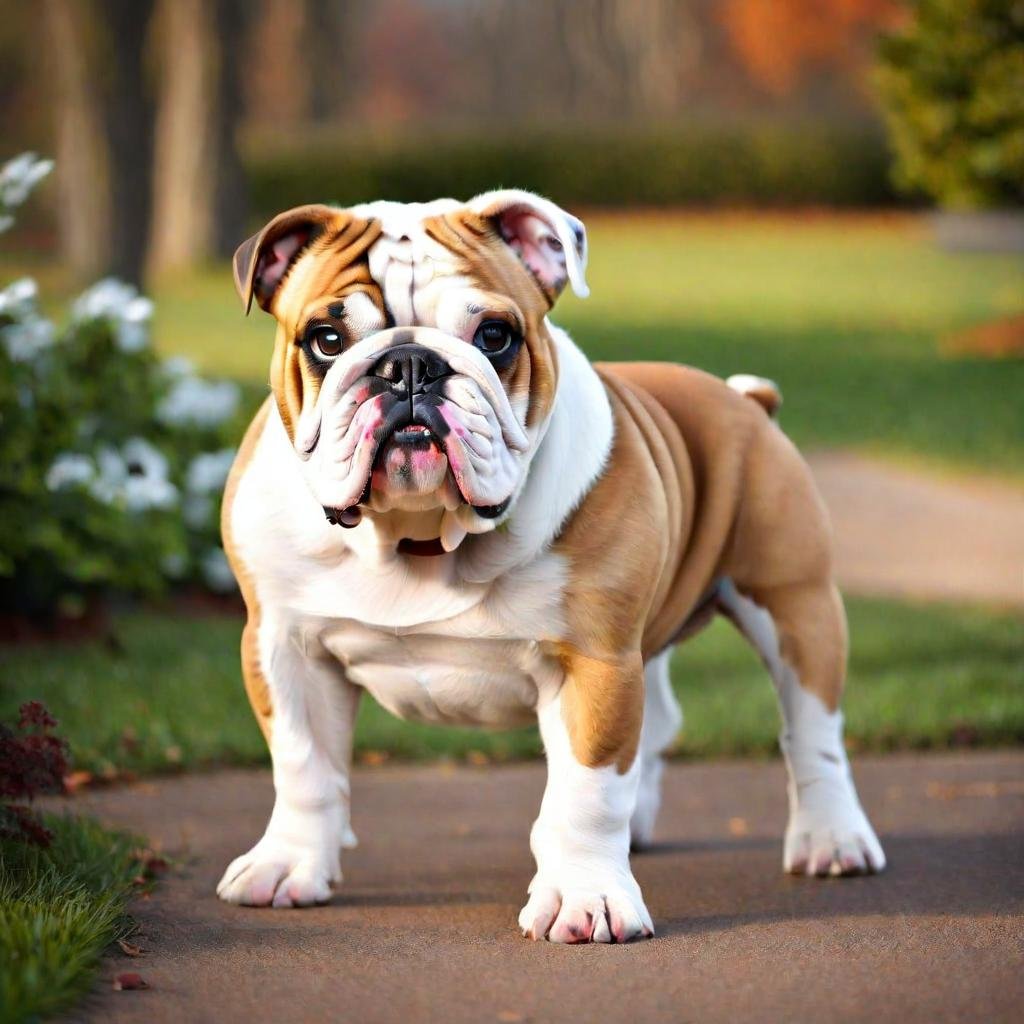
Height
- Male: About 14 to 15 inches
- Female: About 14 to 15 inches
Weight
- Male: 50 to 55 pounds
- Female: 40 to 50 pounds
Color
Bulldogs come in a variety of colors, including:
- Brindle
- White
- Fawn
- Red
- Piebald (a mix of colors with large patches of two or more colors)
Temperament and Behavior
Bulldogs are known for their distinctive appearance and charming personality. They are:
- Gentle and affectionate: Bulldogs are known for their sweet and loving nature, making them great companions.
- Calm and laid-back: They have a relatively low energy level compared to other breeds, enjoying a more relaxed lifestyle.
- Stubborn but friendly: Bulldogs can be a bit stubborn, but they are generally friendly and good-natured.
- Good with children and other pets: Their gentle demeanor makes them excellent family pets.
- Protective and loyal: Bulldogs are known to be loyal to their families and can be protective when needed.
Lifespan
Bulldogs typically have a lifespan of 8 to 10 years.
Unique History
The Bulldog has a unique and storied history:
- Origin: Bulldogs originated in England and were initially bred for bull baiting, a cruel sport in which dogs fought bulls. The breed’s name reflects this history.
- Transformation: After bull-herding was outlawed in 1835, Bulldogs were bred to be companion animals. Breeders focused on reducing their aggression and increasing their friendly and gentle nature.
- Recognition: The Bulldog was recognized by the American Kennel Club in 1886 and has since become a popular breed in many countries.
- Modern Role: Today, Bulldogs are kept primarily as companion animals. Their distinctive appearance with a wrinkled face and protruding nose, as well as their gentle temperament, has made them a beloved breed.
Despite their history as fierce bull-herding dogs, Bulldogs are now known for their calm and affectionate natures. They are beloved for their loyalty and make excellent pets for families and individuals who appreciate their unique blend of tenacity and gentleness.
4. Australian Shepherd :
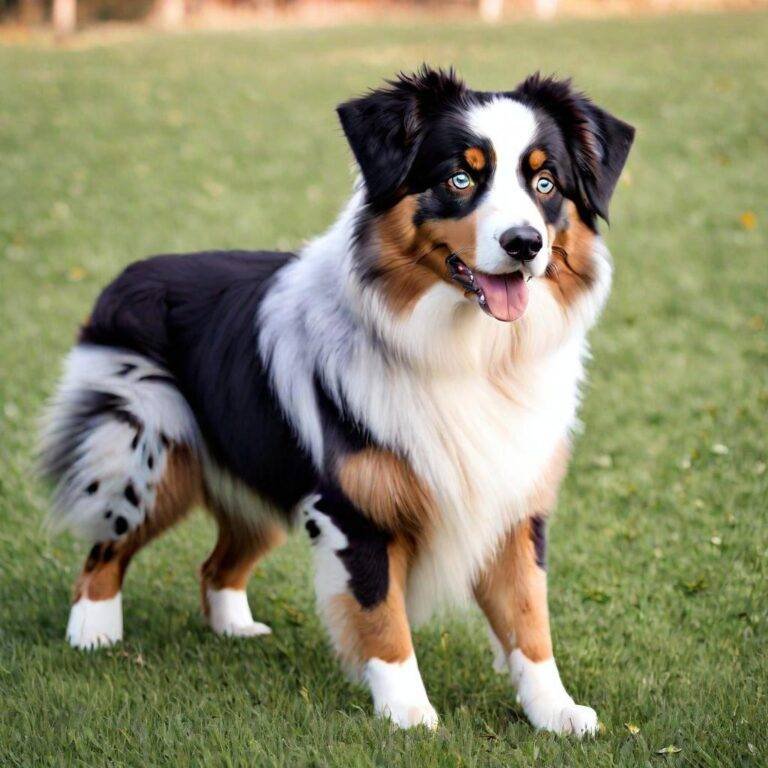
Height
- Male: 20 to 23 inches
- Female: 18 to 21 inches
Weight
- Male: 50 to 65 pounds
- Female: 40 to 55 pounds
Color
Australian Shepherds come in a variety of beautiful colors, including:
- Blue merle
- Red merle
- Black
- Red
- All these colors can have white markings and/or tan (copper) points.
Temperament and Behavior
Australian Shepherds are known for their intelligence, energy, and work ethic. They are:
- Energetic and active: Aussies require a lot of physical exercise and mental stimulation to stay happy.
- Intelligent and trainable: They excel in obedience training and dog sports due to their high intelligence and eagerness to please.
- Loyal and protective: They are devoted to their families and can be protective, making them good watchdogs.
- Friendly and sociable: While they can be reserved with strangers, they are typically friendly and affectionate with their families.
- Good with children and other pets: With proper socialization, they are known to be good with kids and can get along well with other pets.
Lifespan
Australian Shepherds typically have a lifespan of 12 to 15 years.
Unique History
The Australian Shepherd has an interesting and somewhat misleading history:
- Origin: Despite its name, the breed was developed in the United States, not Australia. It is believed that this breed was named due to its association with Basque shepherds who came to America from Australia in the 1800s.
- Development: The breed was refined for herding cattle in the western United States, particularly in the late 19th and early 20th centuries. Their ability to adapt to different terrains and climates made them invaluable to cattlemen and farmers.
- Recognition: The American Kennel Club recognized the Australian Shepherd in 1991, although the breed was popular as working ranch dogs and in various dog sports long before that.
- Role: Historically, Australian Shepherds were used primarily as herding dogs. Today, they are also popular in competitive dog sports such as agility, obedience and herding trials. Additionally, they make excellent therapy dogs and search and rescue dogs due to their intelligence and versatility.
Australian Shepherds are beloved for their energetic and hard-working nature, making them excellent companions for active individuals and families who can provide the exercise and mental stimulation they need. Their unique history as an American breed with a global name adds to their allure and allure.
5. Boxer :
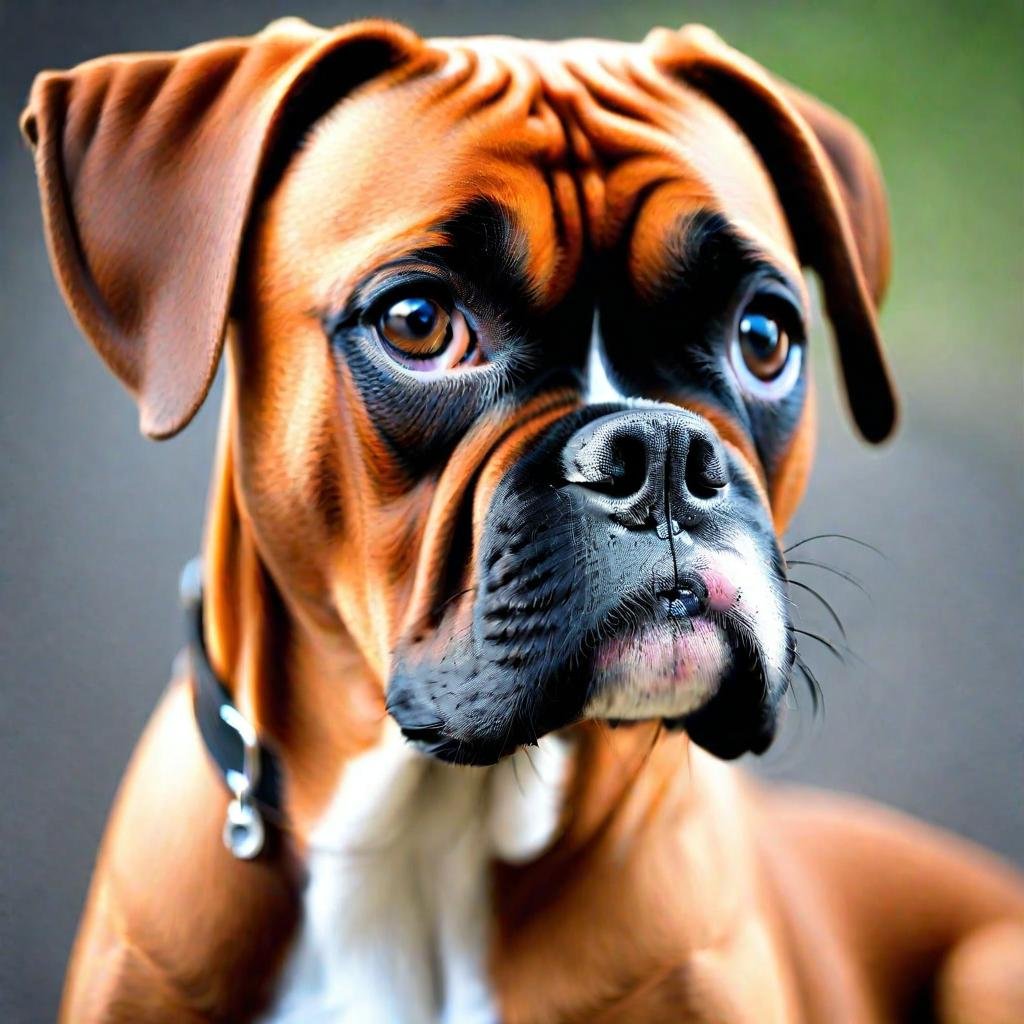
Height
- Male: 23 to 25 inches
- Female: 21.5 to 23.5 inches
Weight
- Male: 65 to 80 pounds
- Female: 50 to 65 pounds
Color
Boxers come in the following colors:
- Fawn
- Brindle
- White (less common, often with fawn or brindle markings)
They may have white markings on the chest and paws.
Temperament and Behavior
Boxers are known for their playful and energetic demeanor. They are:
- Energetic and playful: Boxers are highly active and love to play, making them great companions for active families.
- Loyal and protective: They are very loyal to their families and can be protective, making them good watchdogs.
- Intelligent and trainable: Boxers are smart and can be trained effectively with consistency and positive reinforcement.
- Affectionate and sociable: They are known for their affectionate nature and enjoy being with people. They typically get along well with children and other pets.
- Patient and gentle: Despite their strong, muscular build, Boxers are generally patient and gentle, especially with children.
Lifespan
Boxers typically have a lifespan of 10 to 12 years.
Unique History
The Boxer has a distinctive history that contributes to its unique character:
- Origin: This breed originated in Germany in the late 19th century. It was developed from other breeds such as the Bullenbeisser (now extinct) and the Bulldog.
- Development: The Boxer was originally used for hunting large game such as boar, bear and deer. Due to their strength, intelligence and trainability they were also used as guard dogs, police dogs and for military purposes.
- Recognition: The Boxer was recognized by the American Kennel Club in 1904. The breed gained popularity in the United States after World War II when soldiers brought them home from Europe.
- Role: Over the years, Boxers have transitioned from working dogs to beloved family pets. Their versatility allows them to excel in a variety of roles, including therapy dogs, service dogs, and in competitive dog sports such as agility and obedience.
Boxers are admired for their enthusiastic and loving nature. Their mix of playfulness, loyalty, and protective instincts make them wonderful companions for families who can match their high energy levels and provide them with plenty of interaction and exercise.
6. Cocker Spaniel :
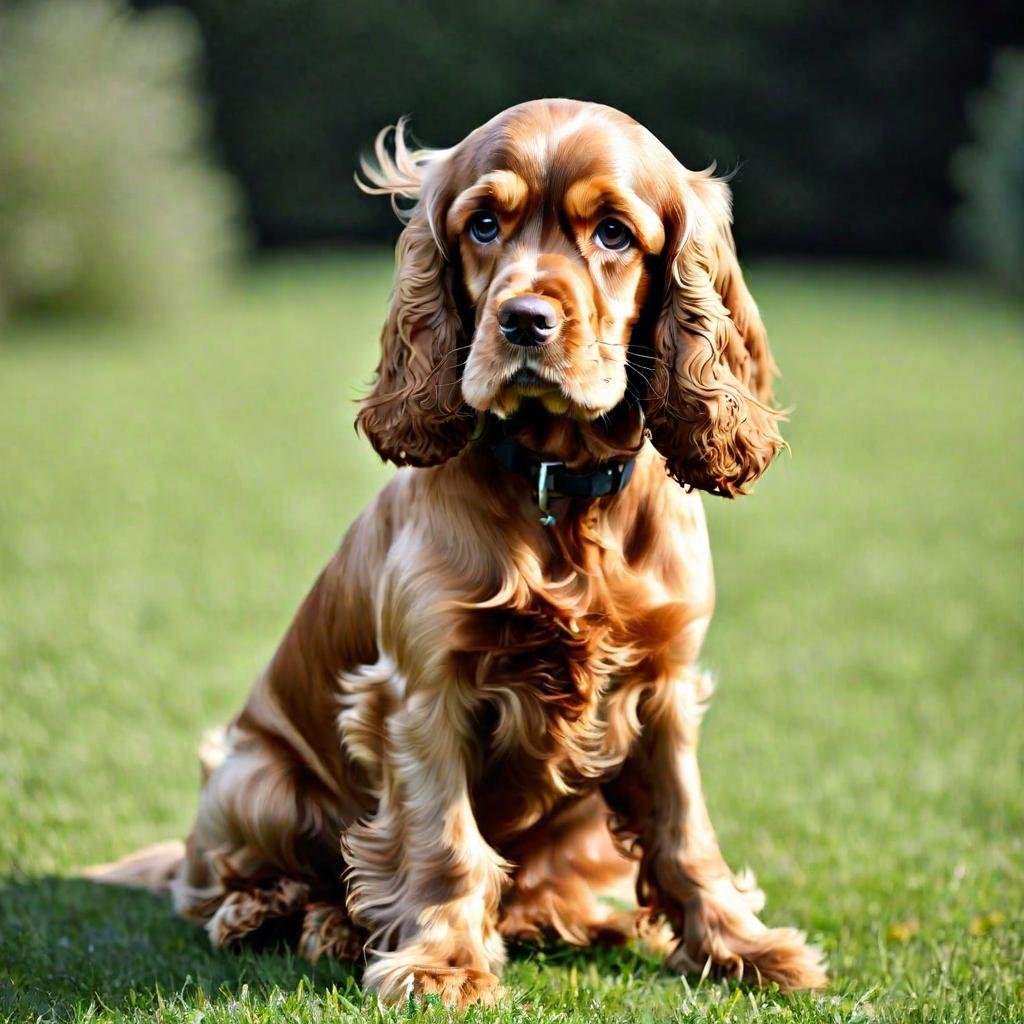
Height
- Male: 15 to 17 inches
- Female: 14 to 16 inches
Weight
- Male: 25 to 30 pounds
- Female: 20 to 25 pounds
Color
Cocker Spaniels come in a variety of coat colors, including:
- Solid colors: Such as black, buff, chocolate, or red.
- Parti-colors: Such as black and white, or liver and white.
- Roans: Where white is mixed with another color.
Temperament and Behavior
Cocker Spaniels are known for their cheerful and affectionate nature. They are:
- Friendly and sociable: Cocker Spaniels are typically good-natured and enjoy the company of their families and other pets.
- Intelligent and trainable: They are intelligent dogs that respond well to positive reinforcement training methods.
- Energetic and playful: Cocker Spaniels have a moderate energy level and enjoy playtime and outdoor activities.
- Gentle and affectionate: They are known for their loving nature and enjoy being close to their owners.
- Alert and responsive: They make good watchdogs and will alert their owners to anything unusual.
Lifespan
Cocker Spaniels typically have a lifespan of 12 to 15 years.
Unique History
The Cocker Spaniel has a rich history and has been a beloved companion for centuries:
- Origin: The breed originated in Spain and was brought to England in the 14th century. They were originally bred as hunting dogs, specifically to chase birds, especially woodcock (this is where the breed gets its name “cocker”).
- Development: The Cocker Spaniel was recognized as a distinct breed separate from the English Springer Spaniel in the late 19th century. They gained popularity in the United States in the early 20th century and have since become one of the most popular dog breeds.
- Recognition: The American Kennel Club recognized the Cocker Spaniel in 1878. Over time, the American and English lines have become slightly different in appearance and temperament.
- Role: Today, Cocker Spaniels are kept primarily as companion animals and are known for their affectionate and gentle nature. They excel as family pets, therapy dogs, and in various dog sports such as obedience and agility.
Cocker Spaniels are admired for their loving and friendly nature, making them excellent pets for families and individuals. Their history as skilled hunting dogs has shaped their temperament and abilities, making them versatile and loyal companions.
7. Beagle :
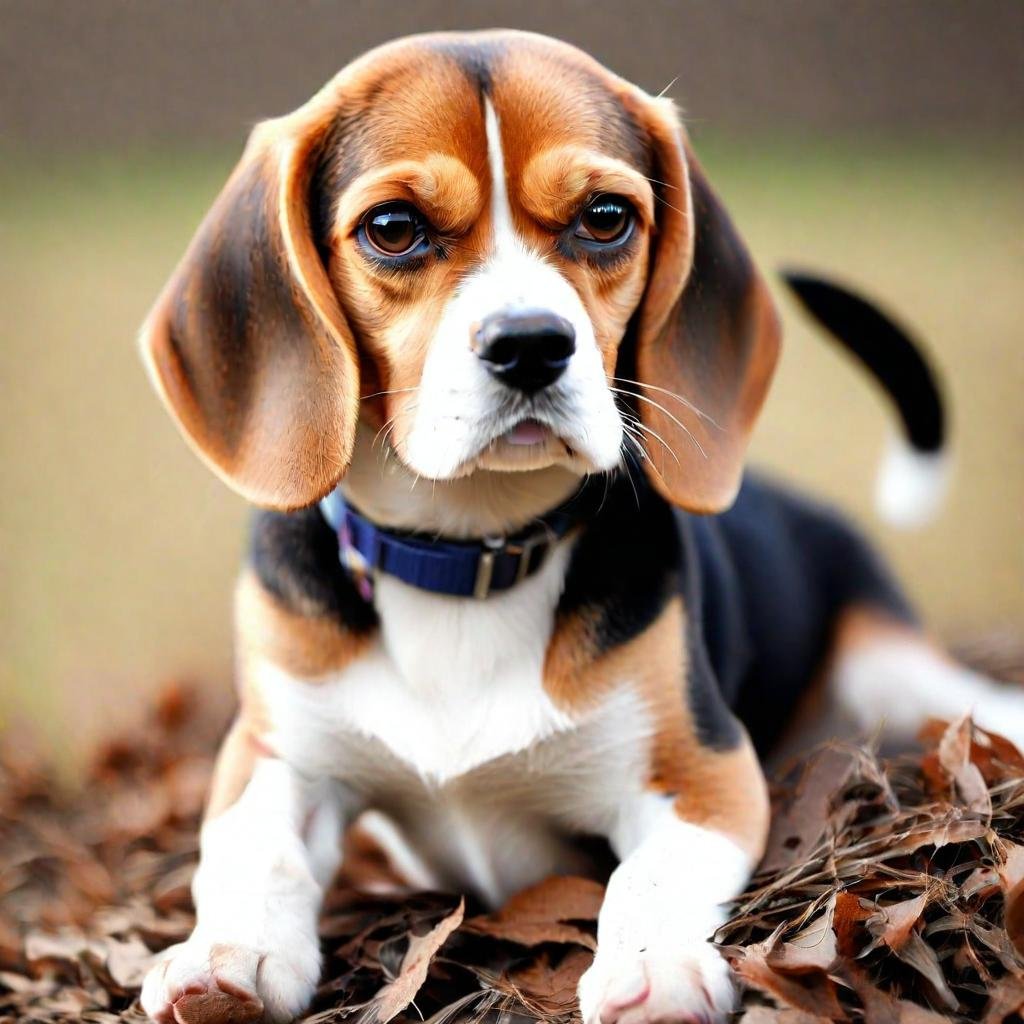
Height
- Male: 14 to 16 inches
- Female: 13 to 15 inches
Weight
- Male: 22 to 25 pounds
- Female: 20 to 23 pounds
Color
Beagles come in a variety of colors, including:
- Tri-color: Black, white, and tan
- Red and white
- Lemon and white
- Chocolate and white
- Tan and white
Temperament and Behavior
Beagles are known for their friendly and curious nature. They are:
- Affectionate and sociable: Beagles are typically good with children and other pets, enjoying the company of their family.
- Curious and independent: They have a strong sense of smell and are known for following scents, which can sometimes lead them to be independent thinkers.
- Energetic and playful: Beagles have a moderate energy level and enjoy playtime and outdoor activities.
- Intelligent and stubborn: They are intelligent dogs but can be stubborn, which can make training a challenge without patience and consistency.
- Loud and vocal: Beagles have a distinctive bark and are known for their vocalizations, particularly when they catch a scent or are excited.
Lifespan
Beagles typically have a lifespan of 12 to 15 years.
Unique History
The Beagle has a long and distinguished history as a scent hound:
- Origin: Beagles date back to ancient times, with their earliest ancestors believed to have originated in Ancient Greece. The modern Beagle evolved in England as a hunting dog, specifically for tracking small game such as rabbits.
- Development: Beagles grew in popularity in England during the 19th century, especially among hunters who valued their keen sense of smell and ability to pack.
- Recognition: The American Kennel Club recognized the Beagle in 1885. Since then, beagles have become popular as both hunting dogs and companion animals.
- Role: Today, beagles are kept primarily as companion animals and are still used for hunting rabbits and other small animals in some parts of the world. Their friendly and sociable nature, combined with their adaptability, makes them suitable for a variety of living environments.
Beagles are admired for their loving and curious personalities. Their history as skilled scent hunters has shaped their temperament and abilities, making them excellent companions for families and individuals who appreciate their playful and friendly nature.
8. Vizsla :
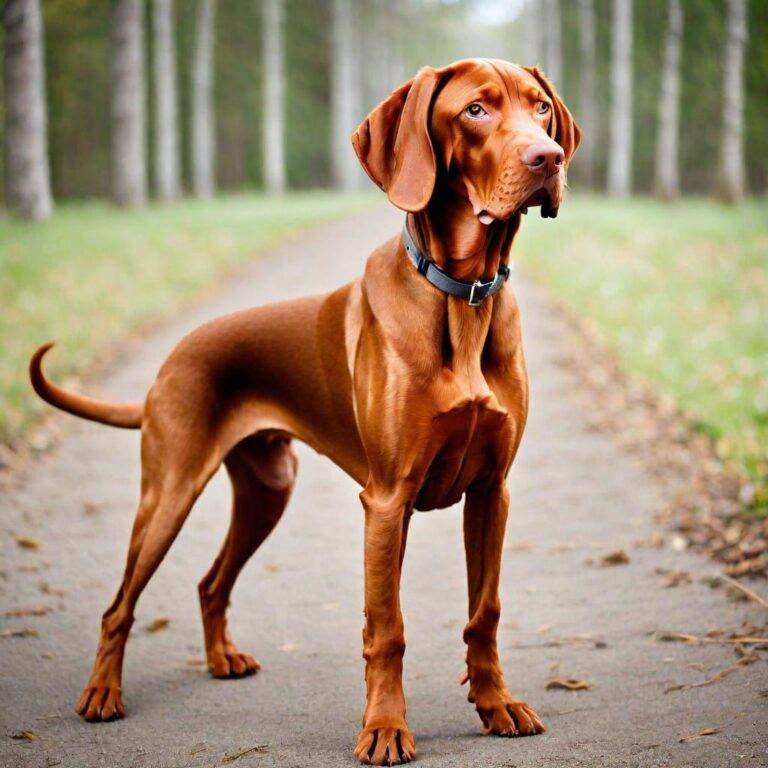
Height
- Male: 22 to 24 inches
- Female: 21 to 23 inches
Weight
- Male: 45 to 65 pounds
- Female: 40 to 55 pounds
Color
Vizslas have a short, smooth coat that is typically a solid golden rust color.
Temperament and Behavior
Vizslas are known for their energetic and affectionate nature. They are:
- Energetic and athletic: Vizslas are highly active dogs that require regular exercise and mental stimulation.
- Affectionate and loyal: They are known for forming strong bonds with their families and are often referred to as “velcro dogs” because they like to be close to their owners.
- Intelligent and trainable: Vizslas are intelligent dogs that excel in obedience training and various dog sports.
- Gentle and sensitive: They have a gentle disposition and are sensitive to their owner’s moods, making them excellent companions.
- Good with children and other pets: With proper socialization, Vizslas get along well with children and other pets.
Lifespan
Vizslas typically have a lifespan of 12 to 15 years.
Unique History
The Vizsla has a rich history that dates back centuries:
- Origin: This breed originated in Hungary and is one of the oldest hunting breeds in Europe. They were originally bred as sniffers and retrievers for Hungarian nobility and were prized for their keen hunting skills and loyalty.
- Development: The popularity of the Vizsla spread throughout Europe, and the breed faced extinction during World War I and World War II. However, dedicated breeders preserved the Vizsla and it eventually gained worldwide recognition.
- Recognition: The American Kennel Club recognized the Vizsla in 1960. Since then, Vizslas have become popular as both hunting companions and family pets.
- Role: Today, Vizslas are kept primarily as companion animals and are still used for hunting and retrieving. Their versatility allows them to excel in a variety of roles, including therapy dogs, search and rescue dogs, and competitive dog sports such as agility and obedience.
Vizslas are admired for their loving and energetic personalities. Their history as skilled hunting dogs has shaped their temperament and abilities, making them excellent companions for active individuals and families who can provide the exercise and mental stimulation they need.
9. Shetland Sheepdog :
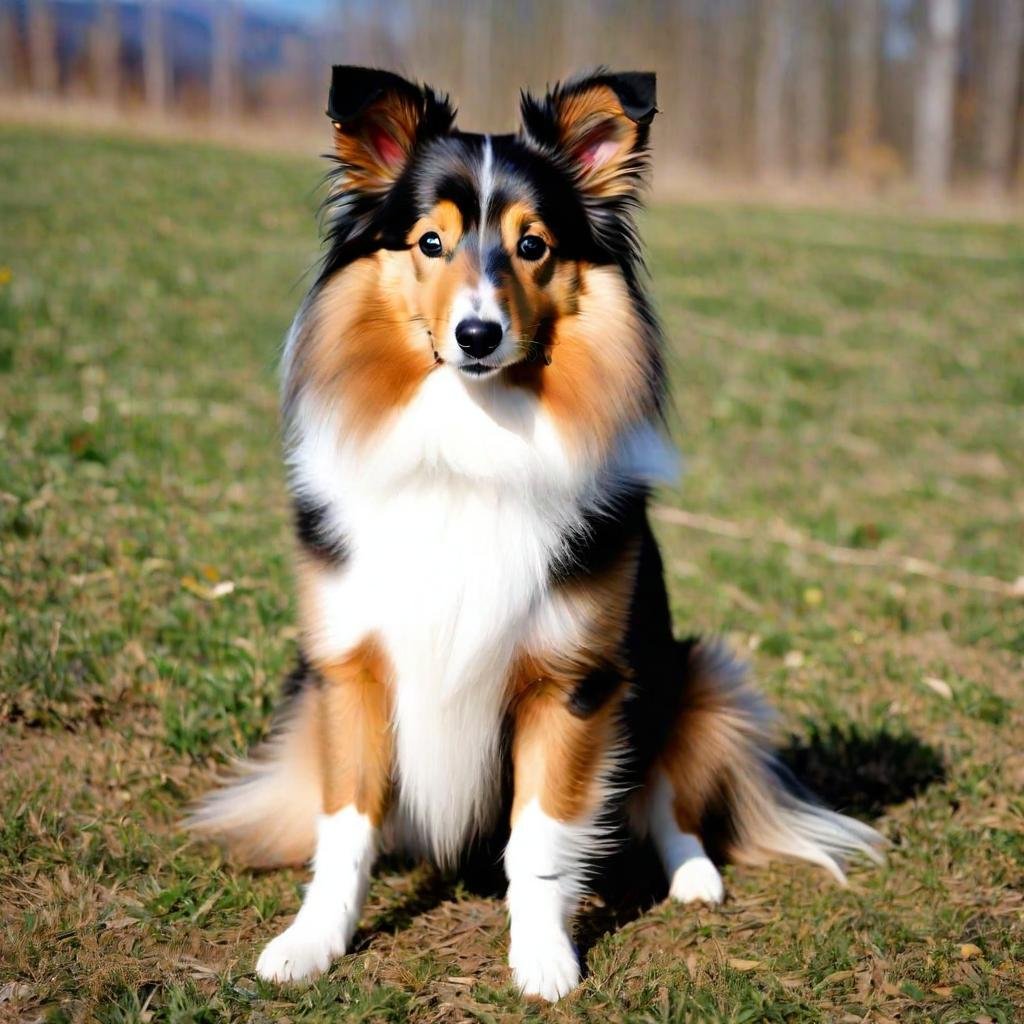
Height
- Male: 14 to 15 inches
- Female: 13 to 14 inches
Weight
- Male: 20 to 25 pounds
- Female: 15 to 20 pounds
Color
Shetland Sheepdogs come in various colors and patterns, including:
- Sable (most common)
- Blue merle
- Tri-color (black, white, and tan)
- Bi-color (black and white)
Temperament and Behavior
Shetland Sheepdogs, or Shelties, are known for their intelligence and gentle nature. They are:
- Intelligent and trainable: Shelties are highly intelligent dogs that excel in obedience training and agility. They are eager to please their owners.
- Loyal and affectionate: They form strong bonds with their families and are known to be loyal companions.
- Energetic and playful: Shelties have a moderate energy level and enjoy playtime and activities that stimulate their minds.
- Alert and responsive: They make excellent watchdogs and will alert their owners to anything unusual.
- Reserved with strangers: Shelties can be reserved or shy around strangers, but they are typically not aggressive.
Lifespan
Shetland Sheepdogs typically have a lifespan of 12 to 14 years.
Unique History
The Shetland Sheepdog has a fascinating history:
- Origin: Despite their name, Shelties originated in the Shetland Islands of Scotland. These were developed from smaller Scottish Shepherd dogs and other breeds such as Collies.
- Purpose: Shelties were originally bred as herding dogs for sheep and other livestock in the harsh climate of the Shetland Islands.
- Development: The breed gained popularity in the late 19th and early 20th centuries when they were brought to England and the United States. They were recognized by the American Kennel Club in 1911.
- Role: Today, Shetland Sheepdogs are kept primarily as companion animals and are known for their agility and obedience skills. They are also used in medical work and excel in competitive dog sports such as obedience and agility.
Shetland Sheepdogs are admired for their intelligence, loyalty, and gentle temperament. They make wonderful family pets and thrive in environments where they receive mental stimulation and lots of attention from their owners. Their history as skilled herding dogs has shaped their temperament and abilities, making them versatile and lovable companions.
10. Whippet :
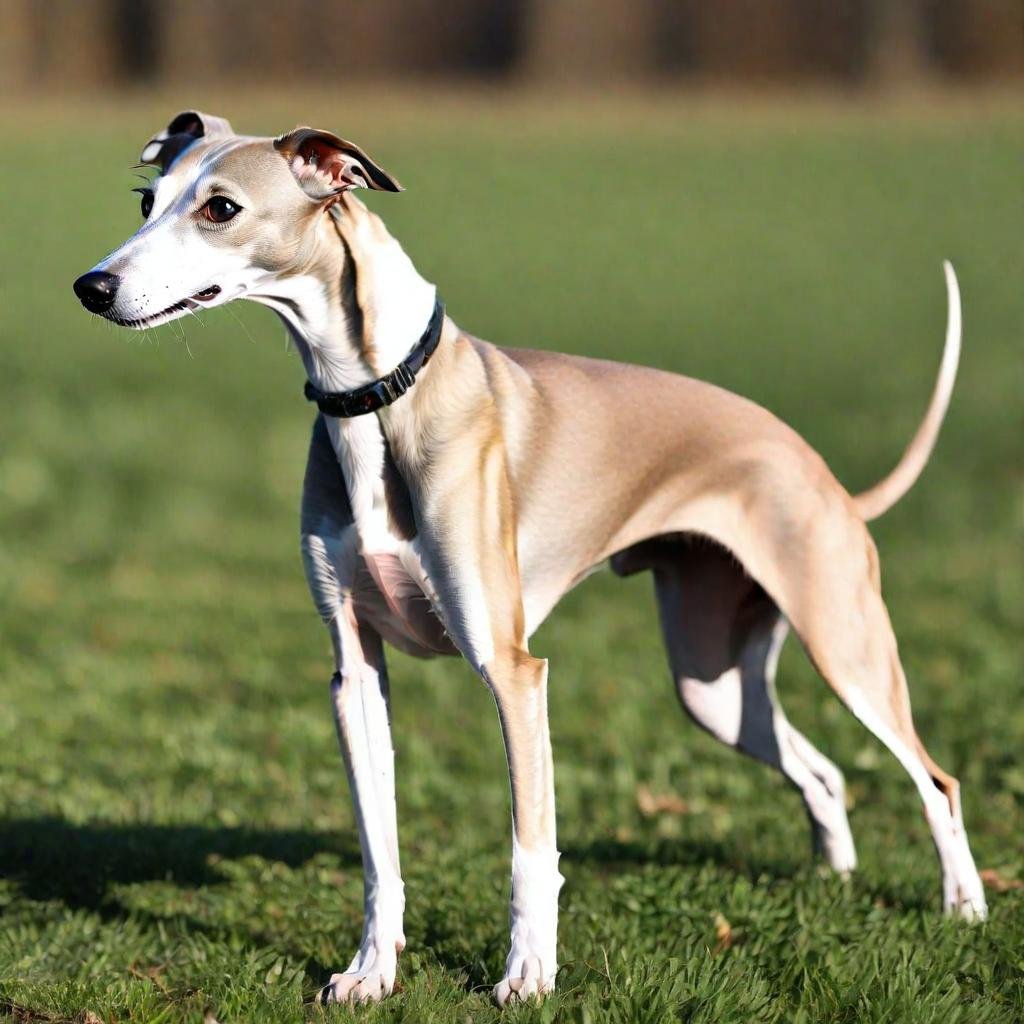
Height
- Male: 19 to 22 inches
- Female: 18 to 21 inches
Weight
- Male: 25 to 40 pounds
- Female: 20 to 35 pounds
Color
Whippets come in a variety of colors and patterns, including:
- Solid colors: Such as black, fawn, blue, white, and brindle.
- Parti-colors: Such as black and white, or fawn and white.
- Brindle patterns: Where darker stripes overlay a lighter base coat.
Temperament and Behavior
Whippets are known for their gentle and affectionate nature. They are:
- Gentle and quiet: Whippets are generally quiet dogs that are well-suited for apartment living.
- Affectionate and loyal: They form strong bonds with their families and enjoy spending time with them.
- Elegant and athletic: Whippets are known for their sleek and slender build, which allows them to reach high speeds when running.
- Independent: They can be somewhat independent but are typically responsive to gentle training and positive reinforcement.
- Good with children and other pets: Whippets are known to be good with children and get along well with other dogs.
Lifespan
Whippets typically have a lifespan of 12 to 15 years.
Unique History
The Whippet has a unique history as a racing and hunting dog:
- Origin: Whippets originated in England during the 19th century. They were developed by crossing small greyhounds with various terriers and other breeds to create a small, fast dog for hunting rabbits and rats.
- Racing: Whippets gained popularity in the sport of hunting, where they would chase and catch small game. This eventually led to the development of organized racing programs for Whippets.
- Recognition: The breed was recognized by the American Kennel Club in 1888. Today Whippets are still used in racing and lure coursing competitions, as well as being beloved companions.
- Role: Whippets are kept primarily as companion animals and they excel in activities such as seduction, obedience, and agility. They are also known for their grace and beauty in the show ring.
Whippets are admired for their gentle and loving nature as well as their athleticism and speed. Their history as skilled hunters and racers has shaped their temperament and abilities, making them excellent companions for active individuals and families who appreciate their beautiful appearance and affectionate behavior.
11. Dalmatian :
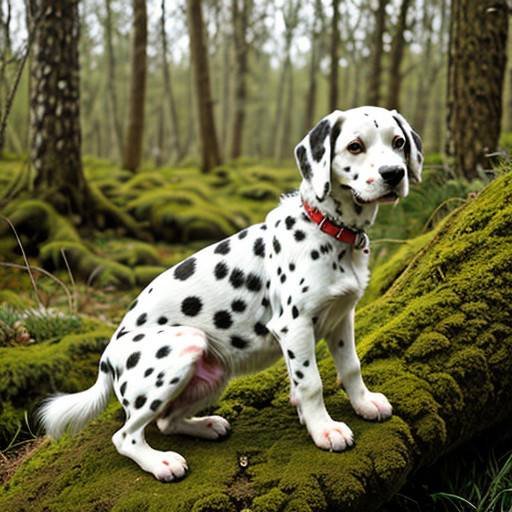
Height
- Male: 22 to 24 inches
- Female: 20 to 22 inches
Weight
- Male: 55 to 70 pounds
- Female: 45 to 60 pounds
Color
Dalmatians are known for their distinctive coat pattern of black or liver spots on a white background.
Temperament and Behavior
Dalmatians are energetic and outgoing dogs with a unique temperament. They are:
- Energetic and playful: Dalmatians are known for their high energy levels and require regular exercise and mental stimulation.
- Friendly and social: They are generally friendly with people and other animals, although early socialization is important.
- Intelligent and trainable: Dalmatians are intelligent dogs but can be independent thinkers. They respond well to positive reinforcement training methods.
- Alert and active: They have a natural tendency to be alert and make good watchdogs.
- Sensitive: Dalmatians can be sensitive to loud noises and rough handling, so they are best suited for families with gentle and considerate children.
Lifespan
Dalmatians typically have a lifespan of 10 to 14 years.
Unique History
The Dalmatian has a fascinating history that goes beyond its distinctive appearance:
- Origin: The exact origins of the Dalmatians are uncertain, but they are believed to have originated in Croatia (formerly Dalmatia). They were bred as coach dogs, running alongside horse-drawn carriages to protect them and clear the way.
- Coach dogs: Dalmatians gained popularity as coach dogs in the 18th and 19th centuries. Their role extended from guarding trains to acting as companions and even performing in circuses and firehouses.
- Firehouse mascots: Dalmatians were closely associated with firehouses as they accompanied horse-drawn fire engines to clear the way. He also served as a mascot and companion for firefighters.
- Recognition: The American Kennel Club recognized the Dalmatian in 1888. Even today, they are known for their distinctive appearance and unique history.
Dalmatians are admired for their energetic and friendly nature, as well as their historical importance as coach dogs and firehouse mascots. They prove to be excellent companions for active families who can provide the exercise and mental stimulation they need to keep them moving.
12. Brittany Spaniel :

Height
- Male: 17.5 to 20.5 inches
- Female: 17.5 to 20.5 inches
Weight
- Male: 30 to 40 pounds
- Female: 30 to 40 pounds
Color
Brittany Spaniels typically come in the following colors:
- Orange and white
- Liver and white
- Tri-color (white, orange, and liver)
Temperament and Behavior
Brittany Spaniels are known for their friendly and energetic nature. They are:
- Energetic and active: Brittany Spaniels are high-energy dogs that require regular exercise and mental stimulation.
- Intelligent and trainable: They are intelligent dogs that are eager to please and respond well to positive reinforcement training.
- Affectionate and loyal: Brittany Spaniels are known for their loving and loyal nature towards their families.
- Good with children and other pets: They are typically good with children and get along well with other dogs and pets when properly socialized.
- Alert and eager: Brittany Spaniels are keen hunters with a strong prey drive. They excel in hunting and retrieving activities.
Lifespan
Brittany Spaniels typically have a lifespan of 12 to 14 years.
Unique History
The Brittany Spaniel has a unique history as a versatile hunting dog:
- Origin: The breed originated in France, specifically in the Brittany region. They were originally developed as hunting dogs for bird hunting, especially game birds such as quail and pheasants.
- Versatility: Brittany Spaniels are known for their versatility in hunting. They are adept at both pointing and retrieving, making them valuable companions for hunters.
- Recognition: The American Kennel Club recognized the Brittany Spaniel simply as “Brittany” in 1934. The name was later officially changed to Brittany to reflect the breed’s origins.
- Role: Today Brittany Spaniels are still widely used as hunting dogs. They are also popular as family pets and excel in various dog sports such as agility, obedience and field trials.
Brittany Spaniels are admired for their friendly and affectionate nature as well as their exceptional hunting abilities. They make excellent companions for active individuals and families who enjoy outdoor activities and can provide them with the exercise and mental stimulation they need to get moving.
13. Irish Setter :
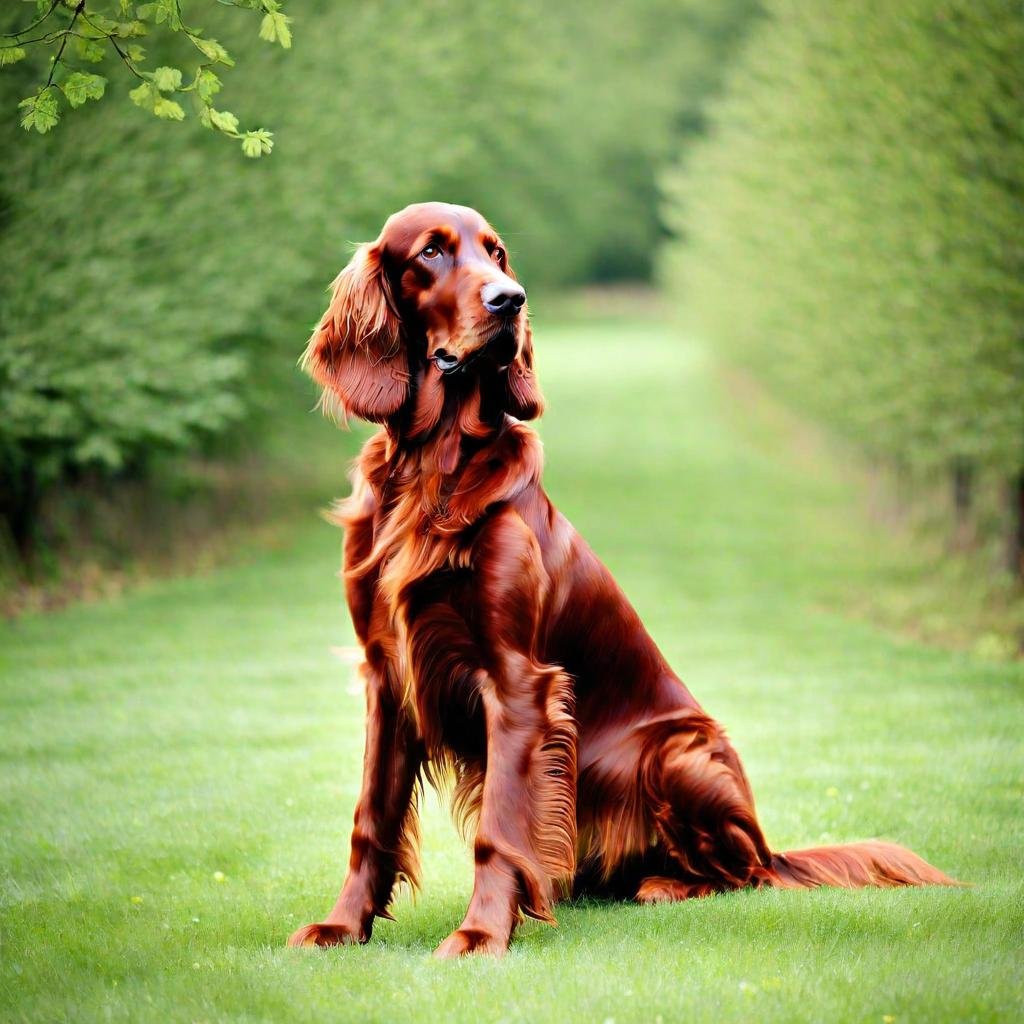
Height
- Male: 23 to 27 inches
- Female: 21.5 to 24.5 inches
Weight
- Male: 65 to 75 pounds
- Female: 55 to 65 pounds
Color
Irish Setters are known for their rich, glossy coat which is typically deep red or chestnut in color.
Temperament and Behavior
Irish Setters are known for their friendly and outgoing nature. They are:
- Energetic and playful: Irish Setters are high-energy dogs that require regular exercise and mental stimulation.
- Affectionate and sociable: They are loving and enjoy spending time with their families. They are known to be good with children and other pets.
- Intelligent and trainable: Irish Setters are intelligent dogs that respond well to positive reinforcement training methods.
- Alert and enthusiastic: They have a keen sense of smell and are natural hunters. They may exhibit pointing behavior when they detect a scent.
- Sensitive: Irish Setters are sensitive dogs that thrive on companionship and do not like to be left alone for long periods.
Lifespan
Irish Setters typically have a lifespan of 11 to 15 years.
Unique History
The Irish Setter has a rich history as a hunting and companion dog:
- Origin: The breed originated in Ireland, where it was developed as a versatile hunting dog for pinpointing, retrieving and flushing game birds. Irish Setters were valued for their stamina and ability to work in a variety of terrain.
- Recognition: The Irish Setter was recognized by the American Kennel Club in 1878. It quickly gained popularity in the United States and became known for its attractive appearance and friendly nature.
- Role: Today, Irish Setters are kept primarily as family pets and companions. They retain their hunting instincts and excel in activities such as field trials, agility and obedience. They are also known to participate in dog shows due to their beautiful appearance and wavy coat.
Irish Setters are admired for their lovable and lively personalities as well as their attractive appearance. They make excellent companions for active families who can provide them with the exercise, mental stimulation, and affection they need to thrive. Their history as skilled hunting dogs has shaped their temperament and abilities, making them versatile and lovable companions.
14. American Staffordshire Terrier :
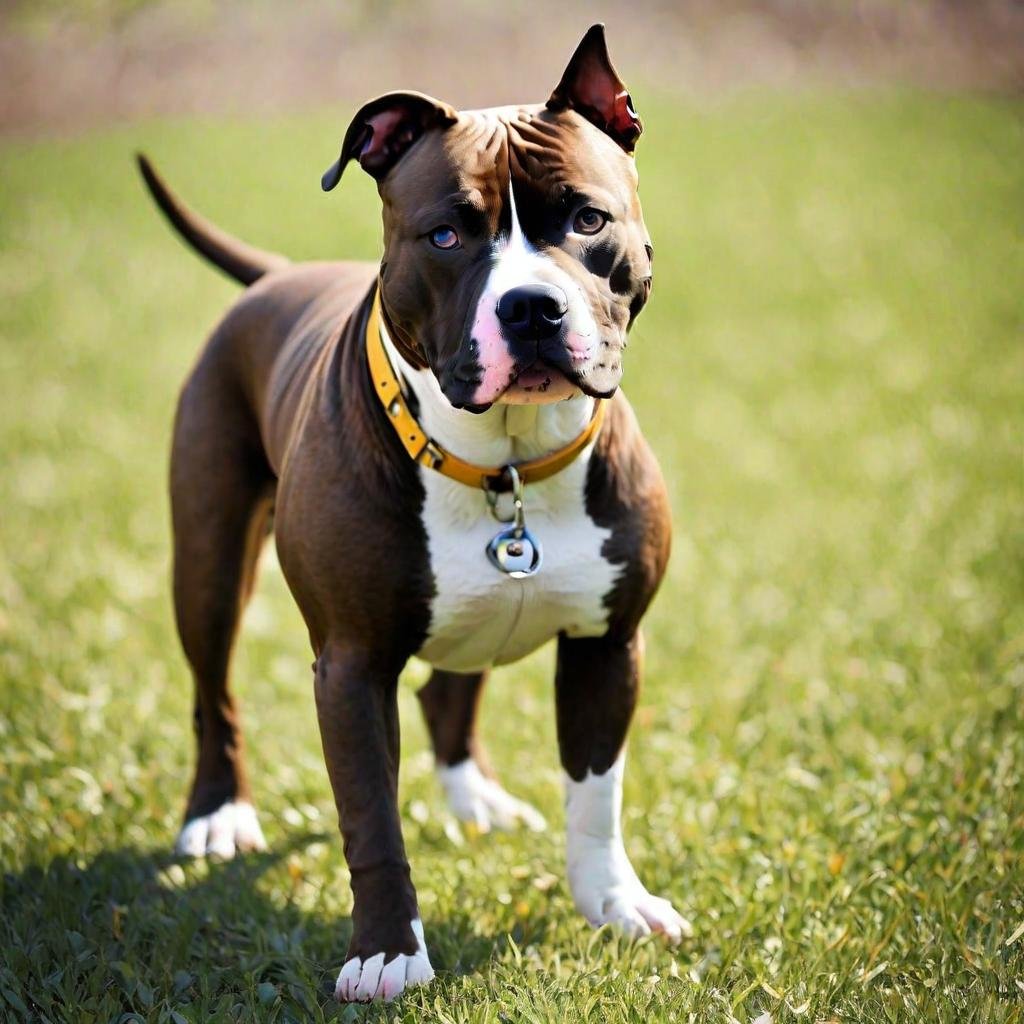
Height
- Male: 18 to 19 inches
- Female: 17 to 18 inches
Weight
- Male: 55 to 70 pounds
- Female: 40 to 55 pounds
Color
American Staffordshire Terriers come in a variety of colors, including:
- Solid colors: Such as black, blue, fawn, white, and red.
- Parti-colors: Such as white with any of the aforementioned solid colors.
Temperament and Behavior
American Staffordshire Terriers, often referred to as AmStaffs, are known for their loyalty and strength. They are:
- Confident and courageous: AmStaffs are confident dogs with a strong sense of loyalty to their families.
- Intelligent and trainable: They are intelligent dogs that respond well to consistent training and positive reinforcement.
- Affectionate and loving: Despite their muscular appearance, AmStaffs are known for their affectionate nature towards their families.
- Protective: They are naturally protective of their families and can make good watchdogs.
- Socialization: Early socialization is important to ensure they get along well with other dogs and pets.
Lifespan
American Staffordshire Terriers typically have a lifespan of 12 to 16 years.
Unique History
The American Staffordshire Terrier has a historical background rooted in working roles and companionship:
- Origin: This breed originated in England, where it was developed as a fighting dog by crossing Bulldogs with Terriers. They were originally used for bull-baiting and later evolved into fighting dogs.
- Transformation: In the 19th century, the breed was brought to America where it was bred for qualities such as loyalty, strength, and agility. The American Kennel Club recognized the breed as the American Staffordshire Terrier in 1936.
- Role: Today, Am Staffs are kept primarily as family pets and companions. They are known for their versatility in various roles such as therapy dogs, search and rescue dogs, and service animals. They are also competitive in dog sports such as agility and obedience.
American Staffordshire Terriers are admired for their loyalty, affection, and strength. With proper training and socialization, they can be excellent family pets and companions for active individuals who can provide them with the exercise and mental stimulation they need to thrive. Their history as working dogs has influenced their temperament and abilities, making them versatile and devoted companions.
15. English Springer Spaniel :
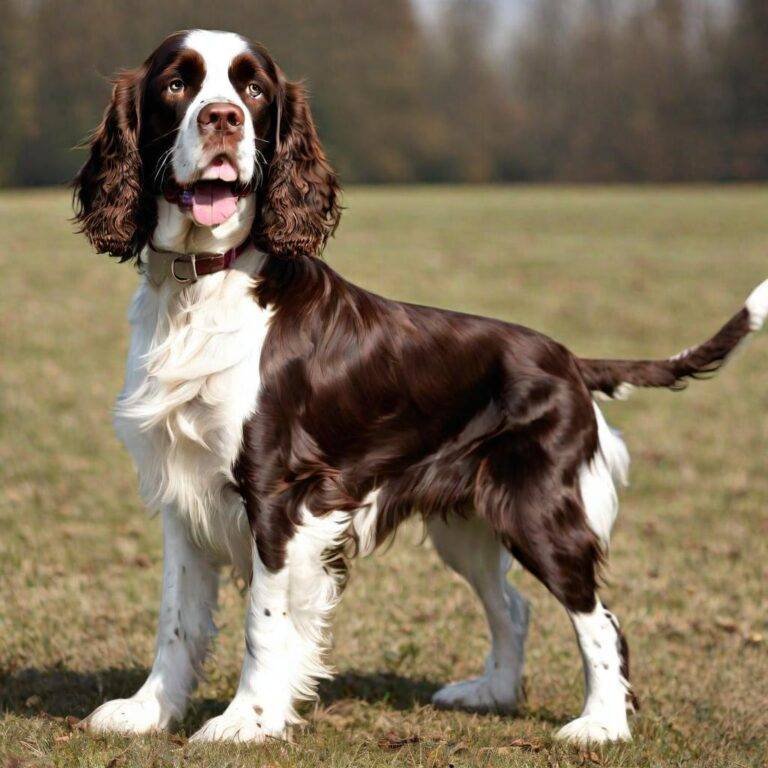
Height
- Male: 19 to 21 inches
- Female: 18 to 20 inches
Weight
- Male: 45 to 55 pounds
- Female: 40 to 50 pounds
Color
English Springer Spaniels come in several coat colors and patterns, including:
- Liver and white
- Black and white
- Tri-color (black, white, and liver)
- Blue or liver roan
Temperament and Behavior
English Springer Spaniels are known for their friendly and adaptable nature. They are:
- Friendly and sociable: Springer Spaniels are known for their friendly disposition and get along well with children, other dogs, and pets.
- Intelligent and trainable: They are intelligent dogs that are eager to please their owners and respond well to positive reinforcement training.
- Energetic and playful: Springer Spaniels have a moderate to high energy level and enjoy outdoor activities and playtime.
- Alert and responsive: They have a keen sense of smell and are excellent hunters. They may exhibit pointing or flushing behaviors when they detect a scent.
- Affectionate and loyal: They form strong bonds with their families and enjoy being involved in family activities.
Lifespan
English Springer Spaniels typically have a lifespan of 12 to 14 years.
Unique History
The English Springer Spaniel has a rich history as a hunting and companion dog:
- Origin: This breed originated in England as a versatile hunting dog. These were developed to propel or toss birds into the air for hunters to shoot, hence their name.
- Development: In the late 19th century the English Springer Spaniel was recognized as a separate breed from the Cocker Spaniel due to their larger size and different hunting style. They were bred for their stamina, agility and excellent sense of smell.
- Recognition: The American Kennel Club recognized the English Springer Spaniel in 1910. They quickly gained popularity in the United States and became known for their skills as both hunting and family pets.
- Role: Today, the English Springer Spaniel is kept primarily as a family pet and companion. They retain their hunting instincts and excel in activities such as field trials, obedience and agility. They are also valued for their gentle and loving nature, making them excellent therapy dogs and companions for children and the elderly.
English Springer Spaniels are admired for their friendly behavior, intelligence, and versatility. They make excellent companions for active families who can provide them with the exercise, mental stimulation, and affection they need to thrive. Their history as skilled hunting dogs has shaped their temperament and abilities, making them beloved companions and working dogs.
Benefits of Owning a Medium Dog Breed ;
Owning a medium breed dog can bring a unique mix of benefits that cater to different lifestyles and preferences. Medium-sized dogs, often considered the “best medium dog breed,” offer a balance between the compact size of smaller dogs and the sturdiness of larger breeds, making them ideal for many families and individuals.
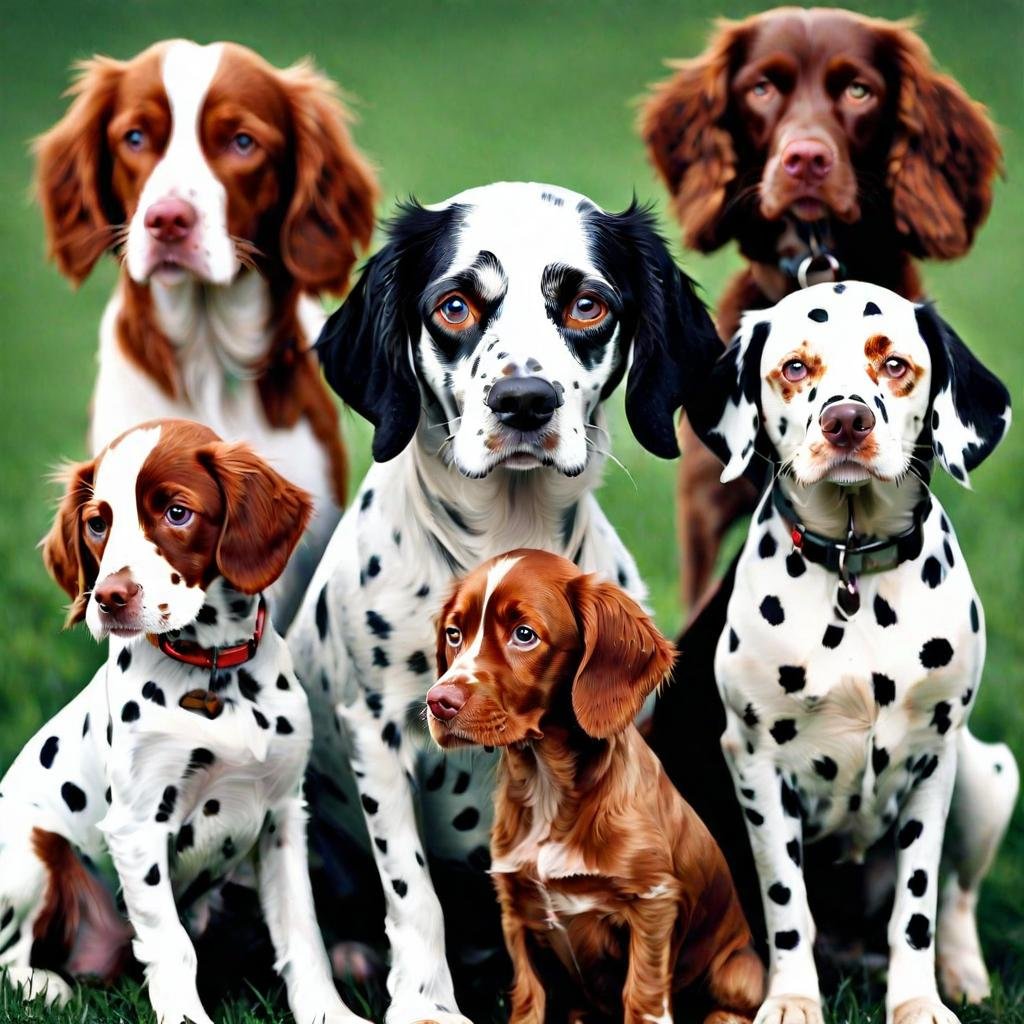
First, their size often makes them more manageable, whether you live in an apartment or a house with limited space. They are generally easy to handle on walks and can adapt well to both indoor and outdoor environments.
Even medium dogs have a good balance of energy levels. They are active enough to enjoy outdoor activities like hiking or playing sports, yet they are not as high-energy as some larger breeds, which makes them more suitable for homes with varying activity levels.
His temperament is another big plus. Many medium breed dogs are known for their friendly and outgoing natures, making them great companions for families with children or other pets. They often form strong bonds with their owners and are loyal and protective without being overly aggressive.
Additionally, medium-sized dogs often exhibit fewer health problems than some larger breeds, yet their lifespan is generally longer than that of smaller dogs. This could mean lower veterinary expenses and longer years together.
Ultimately, owning medium breed dogs offers the best of both worlds in size, temperament, and adaptability – catering to a wide range of lifestyles, making them beloved companions in countless homes.
Health and Wellness ;
When it comes to the health and well-being of medium-sized dog breeds, they often offer unique advantages that complement both their size and genetic predispositions, making them among the “best medium dog breeds” for many owners. Get ranked as something.
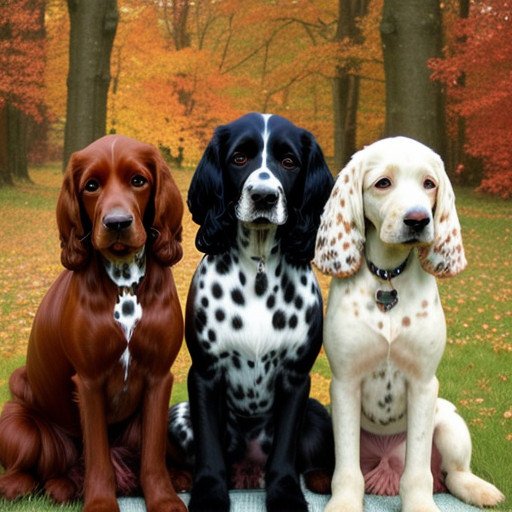
Medium-sized dogs generally enjoy strong health due to a balanced body shape that places less stress on the joints than larger breeds. This often translates into lower orthopedic issues like hip dysplasia and arthritis. Their size also means they are less prone to obesity, provided they get proper exercise and a balanced diet, which contributes to a long and healthy life.
The care needs of medium breeds vary widely, but many breeds require less intensive care than long-haired or larger breeds. This makes maintenance easier and also provides bonding time through grooming sessions.
Their medium size also allows for easy transportation and handling, whether during veterinarian visits or when traveling with the family. This practicality enhances their overall well-being by reducing the stress associated with such activities.
Additionally, medium-sized dogs exhibit less of the respiratory problems often seen in brachycephalic (short-nosed) breeds, who may suffer from difficulty breathing. This respiratory benefit contributes to their overall health and vitality.
In short, the health and welfare benefits of medium-sized dog breeds make them a popular choice for families with fewer health concerns, demonstrating their suitability as beloved pets in a variety of households.
** Conclusion **
Ultimately, choosing one of the best medium breed dogs can enrich your life in countless ways. These dogs offer a perfect blend of size, temperament, and health benefits that make them ideal companions for many families.
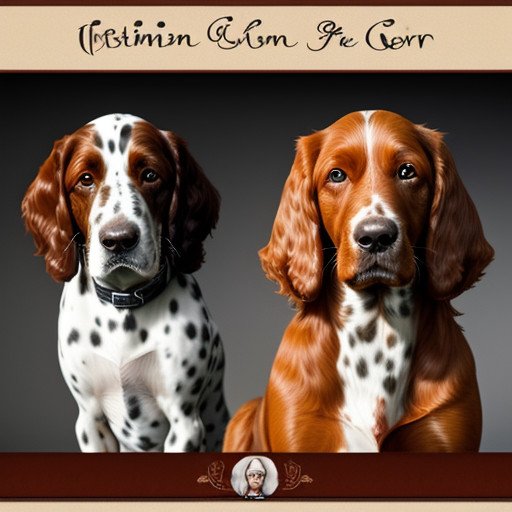
Their manageable size allows them to fit comfortably into a variety of living arrangements, from apartments to large homes, without compromising their energetic and playful nature. Medium-sized dogs often strike a balance between being active and being adaptable to a variety of lifestyles, making them versatile partners for outdoor adventures or cozy indoor cuddles.
Their friendly and outgoing personalities mean they often get along well with children, other pets and visitors, creating a warm and welcoming atmosphere in your home. Their health benefits, including reduced risk of joint problems and obesity, contribute to their longevity and vitality, ensuring many years of companionship and enjoyment.
Whether you’re looking for a loyal jogging partner, a loving family pet, or a trained companion for a variety of activities, medium breed dogs have the perfect mix of qualities to improve your life and bring endless happiness to your home. provide. Choosing one of these best medium breed dogs can be the beginning of a lifelong bond filled with love, adventure, and fond memories.
Additional Resources ;
For additional resources on the best medium dog breeds, there are several avenues to explore that can help you make an informed decision and care for your new companion effectively.
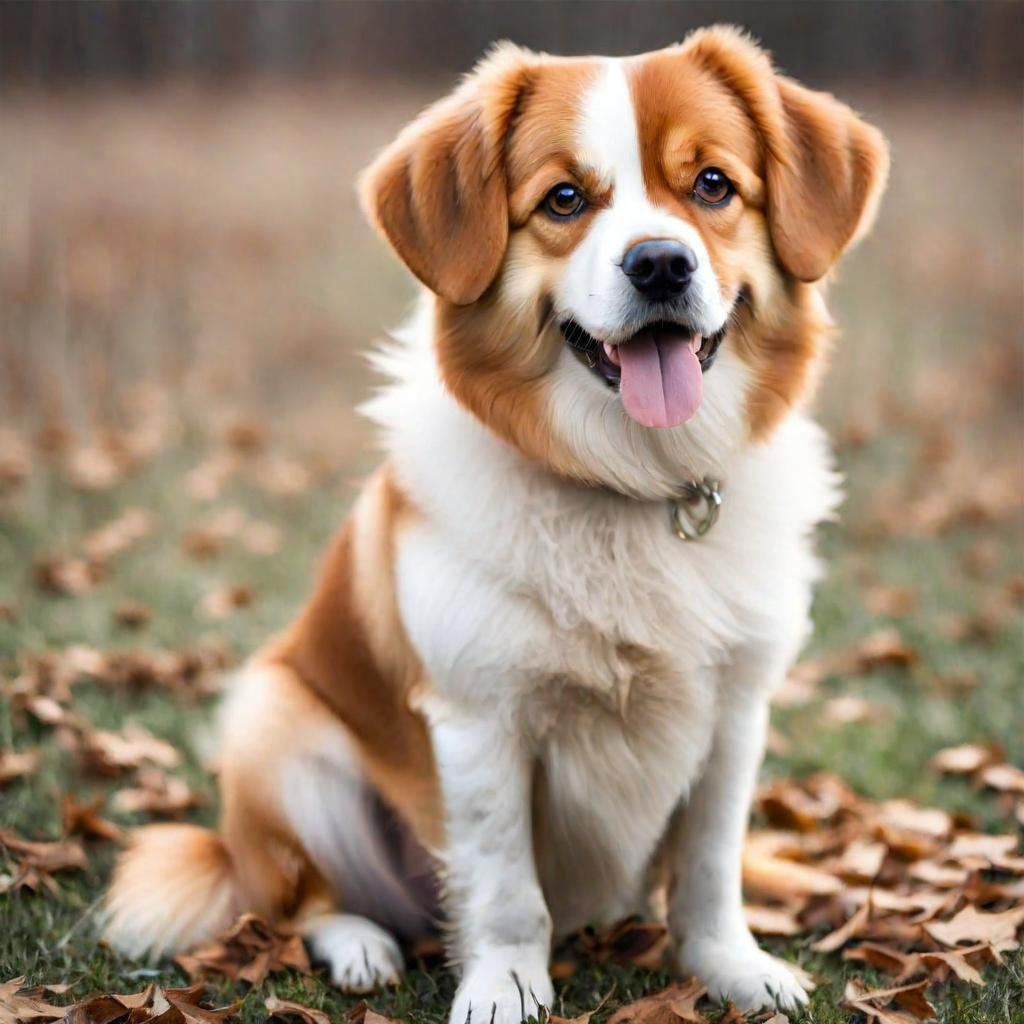
1. Breed Clubs and Organizations:
Joining breed-specific clubs or organizations dedicated to medium dog breeds can provide valuable insight and support. These clubs often offer breed-related information, breeder referrals, and community events where you can meet other owners and enthusiasts.
2. Books and Guides:
Look for books and guides specifically designed for medium breed dogs. These resources often cover breed characteristics, training tips, health care advice and more. They can be found in bookstores, online retailers, or even local libraries.
3. Online Forums and Communities:
Participating in online forums and social media groups focused on medium dog breeds allows you to connect with other owners, ask questions, and share experiences. These communities can provide practical advice, recommendations for products and services, and moral support.
4. Veterinary Guidance:
Your veterinarian is an invaluable resource for information about caring for your medium-sized dog. They can provide advice on nutrition, health maintenance, vaccinations and preventive care tailored to your specific breed.
5. Dog Shows and Events:
Attending dog shows, agility trials, or other dog events can give you first-hand experience with different medium breeds. You can observe their behavior, interact with breeders and handlers, and learn more about their suitability as pets or working dogs.
By exploring these additional resources, you can deepen your understanding of the best medium dog breeds and ensure that you provide the best possible care and support for your new furry friend.
You might be interested in reading this post as well Medium Large Dog Breeds
“Exploring the Perfect Pooch: Top Medium Dog Breeds for Every Lifestyle” ** Introduction ** Choosing the right dog breed is a big decision, especially when you’re looking for a companion that is a perfect fit for your lifestyle. Medium breed dogs are a great choice for many pet owners. They strike a balance between small…
You can read this post https://tomeshnews.co.in/medium-small-dog-breeds/
What makes medium dog breeds a good choice for families?
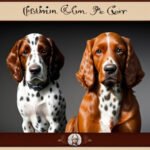
Medium breeds are often sturdy yet manageable in size, fitting well into family life with their friendly and sociable nature.
Do medium dog breeds require a lot of exercise?

They typically need regular exercise like walks and playtime to stay healthy and mentally stimulated.
Are medium dog breeds suitable for first-time dog owners?

Yes, many are known for their trainability and adaptability, making them suitable for beginners.
What are common health concerns for medium-sized dogs?

They may face issues like joint problems and obesity; regular vet check-ups and a balanced diet help manage these.
Are there medium dog breeds good for apartment living?

Yes, breeds with lower energy levels and exercise requirements can thrive in apartments.
How can I keep my medium-sized dog mentally stimulated?
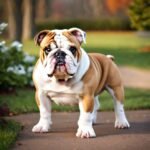
Provide enrichment activities like toys, training sessions, and interactive play to keep them engaged and happy.
